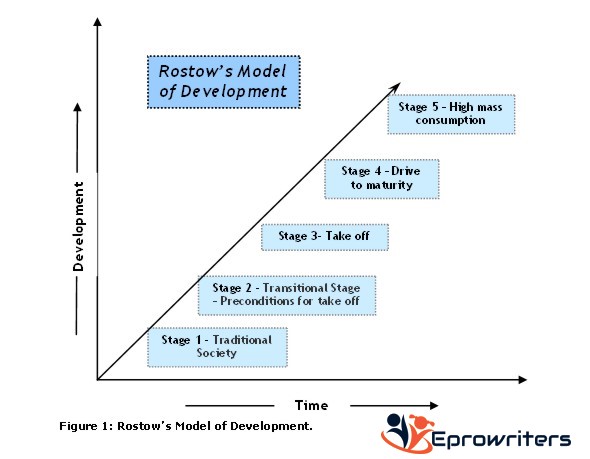- Top Quality Custom Essays
- +1 (628) 201-7932
- eprowriters01@gmail.com
Theorists Rostow and Galbraith
Theorists Rostow and Galbraith

Last updated on September 29th, 2023 at 02:42 pm
In this Theorists Rostow and Galbraith paper, explore we can learn from these pioneering giants of economic and business theories.
Walt W. Rostow
Walt W. Rostow is best known for his theory of the Stages of Economic Growth, one of the major historical models. Rostow’s model postulates that economic growth occurs in five basic stages, of varying length:
VIEW VIDEO (Puchein, 2018, Transcript provided).
Summary of Rostow’s Stages of Economic Growth:
- Traditional society – This first stage is characterized by subsistence level – basic farming, bartering.
- Preconditions for take-off – Industrial development has begun; has developed an international interest.
- Take-off – This is where level 2 has moved into busier, concentrated activities in industrialization, with innovation exhibited in technology.
- Drive to maturity – Longer sustained activity, developing infrastructure, diversifying business activities, industries, and increased focus on quality of life.
- Age of high mass consumption – Broad consumer demands are met by mass production.
Countries can be identified at different stages of Rostow’s model and are evolving at different rates. U.S. businesses might find this model informative when considering where to target their global ambitions. Developing areas of Africa exemplify Levels 2 and 3.
John Kenneth Galbraith
John Kenneth Galbraith is best known for his theories and writings on capitalistic societies. In his most famous work, The Affluent Society (1958), which became a bestseller, Galbraith outlined his view that to become successful, post-World War II America should make large investments in infrastructure, such as highways and education, using funds from general taxation. Galbraith also critiqued the assumption that continually increasing material production is a sign of economic and societal health. Interesting, these two seemingly obvious conclusions are entirely consistent with the final stage of Rostow’s theory, where what he calls “mass consumption” defines the fully developed economic environment.
Summary
What can we learn from these pioneering giants of economic and business theories? Answer: a great deal! These are core business theories that provide a platform of understanding for building other ideas. While we can only touch the surface of their theories in our eight weeks framework, a survey of their principles in the context of your worst-company case study is a worthy endeavor.
The worldwide Economic Environment is currently dominated by recession in the U.S. and unsteady economies in countries such as Italy and Greece. Even emerging markets which have experienced phenomenal growth (e.g., China and India) are not unscathed by global economic currents. Weathering this storm is now the principal concern of many U.S. multi-national businesses, not to mention national governments.
Need help with this or similar assignment?
- Tell Us Your Requirements: Please provide us with the specifics of your paper so that we may do our best to personalize it. Select the discipline, word count, format, academic level, and other details on the order form.
- Connect with the Best Writer: Consult and collaborate with an expert and complete your paper on schedule.
- Monitor the progress: Control the work process by checking the completed parts of your document right away. You can easily submit your comments by chatting with your essay writer on our website.
- Download Your Paper: Get your paper written according to your specifications. It is important to note that you only pay for an essay when you are completely satisfied with the outcome. Please provide us your feedback about our collaboration.
About Us
Eprowriters.com, and its afilliate blog Eprowriters.net, is a custom essay writing service that has been providing academic support with great success for more than five years. We are constantly updating our objectives in order to improve the quality of service we deliver and increase client satisfaction. We’ve progressed to an original concept as a result of our success.


